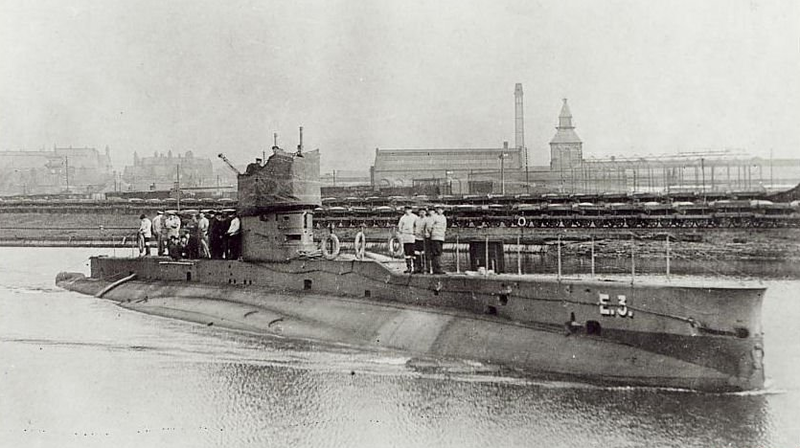.jpg)
Experts from the University of Winchester are to take part in a hunt for a long-lost submarine, believed to be buried beneath a public park.
Simon Roffey, Reader in Archaeology is heading to Dartmouth in April to help pinpoint the exact location of the First World War sub, HMS E52.
He will be accompanied by David Ashby, who manages the University’s Soil Laboratory for the Archaeology, Anthropology, Geography and Forensics Departments.
The pair will be using the University’s Ground Penetrating Radar (GPR) in a bid to find the craft which was sent to the breakers’ yard at Coombe Mud in 1921.
Although the conning tower was removed, it is believed E52 was never fully scrapped but instead lies buried beneath Dartmouth’s Coronation Park.
In the late 1920s the town council bought the mudflats and dumped thousands of tons of soil to create the park, which opened in 1937 to mark the coronation of King George VI.

After trawling through archives and old documents, Lt Thomas Kemp, a training officer at the nearby Britannia Royal Naval College, believes he has found evidence to suggest that the E52 lies at the foot of the hill occupied by the college.
The project has special resonance for Simon as he is an ex-submariner, serving five years in O Class subs in the 1980s
Simon was a weapons technician aboard HMS Onslaught - responsible for maintaining, testing and firing the torpedoes.
“The Onslaught was a diesel electric submarine built in the 1960s but in many ways it was not that much different to the E52,” says Simon.
Although Simon’s main area of expertise is the medieval archaeology, he has retained a keen interest in submarines and was excited to read about the hunt for E52.
“I wrote to Tom offering to help and he was really keen for us to get involved” say Simon.
He hopes the GPR - which can send sound pulses through concrete and tarmac - will provide a clear picture of where exactly the E52 is buried, how much of her remains and how deep.
“The ‘Submarine under the Park’ is a local legend and it could make a wonderful tourist attraction if we could identify its exact location,” says Simon.
“In addition, the University of Winchester is developing an increasing number of modules in the archaeology of conflict and this project could help with database used for research by our students.”
The E52 was 180 feet (55m) long, almost 23 feet (7m) wide and displaced more than 650 tons.
One of more than 50 in her class, E52 was launched in early 1917. During her brief time in service, she sank the German U-boat UC-63 near the Goodwin Sands.
Pictured top: David Ashby and Simon Roffey with the Ground Penetrating Radar.
Above: A Royal Navy E class submarine similar to HMS E52.
Back to media centre